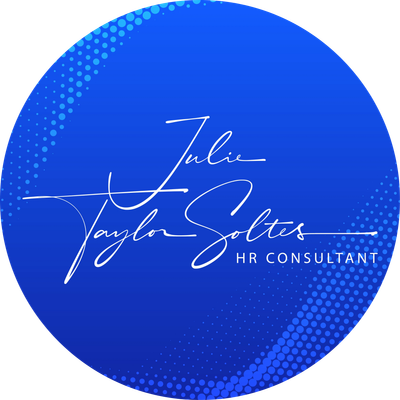Change Is Constant, But Chaos Doesn’t Have to Be

Change is no longer an event. It’s the environment. Every day, leaders are confronted with new technologies, shifting workforce demographics, customer expectations that evolve overnight, and economic factors beyond their control. According to Gartner, nearly 75% of organizations expect to undergo major change initiatives every two to three years, and smaller-scale changes occur continuously in between. For many companies, this pace of change feels like chaos. Employees grow fatigued. Managers feel overwhelmed. Projects stall or underperform. But it doesn’t have to be that way. The most successful organizations understand this truth: change is inevitable, but chaos is optional. What makes the difference is leadership — specifically, a leadership approach that places people at the center.
Why People-First Leadership Matters More Than Ever
In times of change, it can be tempting to double down on process and performance metrics. Yet research consistently shows that people-first strategies drive stronger business results:
- Engagement and retention. Gallup studies reveal that highly engaged employees are 23% more profitable and significantly less likely to leave. Retaining talent reduces disruption and protects institutional knowledge.
- Innovation and adaptability. Teams that feel valued are more willing to experiment, speak up, and solve problems creatively — exactly what organizations need in turbulent times.
- Trust and resilience. A culture of transparency and inclusion helps employees absorb change without disengaging or resisting.
In short: when employees thrive, businesses thrive.
Culture as the Stabilizer in Times of Uncertainty
Think of culture as the “operating system” of an organization. Processes and products may evolve, but culture determines how people respond to challenges. When culture is weak, employees experience change as disorganized, unfair, or threatening. When culture is strong, change feels manageable, even energizing.
Key ingredients of a stabilizing culture include:
- Clarity of purpose. Employees need to know not just what the company does, but why it matters. A clear mission provides direction when circumstances shift.
- Defined values and behaviors. Culture becomes real when values are observable and coachable. For example, “We act with respect” translates into behaviors like “We give feedback privately and constructively.”
- Recognition and celebration. Highlighting achievements reminds people that progress is happening and reinforces trust that leadership sees their efforts.
- Inclusion and belonging. Change often impacts people differently. Inclusive practices ensure all voices are considered, which builds fairness and commitment.
Culture doesn’t eliminate the uncertainty of change. But it does provide the steady ground that employees can stand on.
Practical Strategies for Leaders
How can leaders reduce the chaos of change while guiding their organizations forward? Here are proven, actionable strategies:
1. Communicate a Compelling Change Narrative
Change fatigue often stems from poor communication. Employees hear what is changing but not why it matters. A strong change narrative should:
- Define the problem. What challenge are we solving?
- Explain the path. What’s the plan, and what milestones should people expect?
- Clarify roles. How can employees contribute to success?
Leaders who share the “why” behind decisions build trust and reduce resistance.
2. Equip and Empower Managers
Frontline managers are the key link between strategy and employees. Yet they are often left to “figure it out” on their own. Leaders can empower managers by:
- Providing toolkits with talking points, FAQs, and resources.
- Hosting office hours where managers can raise concerns and share feedback.
- Recognizing managers who successfully support their teams through transitions.
When managers feel prepared, their confidence cascades down to employees.
3. Create a Recognition Rhythm
Recognition isn’t just about morale; it’s about stability. It tells employees, “Your contributions still matter, even in times of change.” Practical tactics include:
- Adding a shout-out segment to weekly huddles.
- Using peer-to-peer recognition platforms.
- Sending handwritten thank-you notes for above-and-beyond efforts.
These small actions create momentum and reduce uncertainty.
4. Invest in Employee Growth
One of the best ways to reduce resistance is to build competence. Employees who feel skilled and adaptable are less likely to see change as a threat. Opportunities might include:
- Micro-trainings on topics like empathy, ADA compliance, or service recovery.
- Cross-training to broaden skills and increase flexibility.
- Mentorship programs to connect employees with experienced leaders.
Investment in growth signals long-term commitment and builds resilience.
Case Study Example: Turning Disruption into Advantage
Consider a hospitality company navigating a major property transition. Employees faced new systems, new leadership, and uncertainty about roles. Initially, morale dropped and turnover increased. Instead of tightening controls, leadership chose a people-first approach:
- Held town halls to explain the “why” behind the transition.
- Provided training sessions on new technology before launch.
- Launched a recognition program to celebrate early adopters and problem-solvers.
Within six months, employee turnover slowed, guest satisfaction scores rose, and the transition was completed on schedule. By focusing on people, the company turned potential chaos into an advantage.
The 4 P’s Framework: A Practical Lens for Change
At JTS HR Consulting, we use the 4 P’s framework as a guide to help leaders navigate uncertainty:
- People — The foundation. When people feel supported, they adapt and innovate.
- Process — The structure. Clear systems provide order and predictability.
- Product — The output. Great teams build great solutions.
- Profit — The result. Healthy financial outcomes follow when the first three align.
By keeping “People” first, organizations position themselves to achieve sustainable success, even in turbulent environments.
The Bottom Line
Change will never slow down. But chaos is optional. Leaders who put people first — who cultivate strong cultures, communicate transparently, and invest in growth — create organizations that are not just resilient, but positioned to thrive.
At JTS HR Consulting, we partner with leaders to reduce chaos, strengthen culture, and unlock the full potential of their teams.
📩 Ready to transform change into a competitive advantage? Contact us today.
